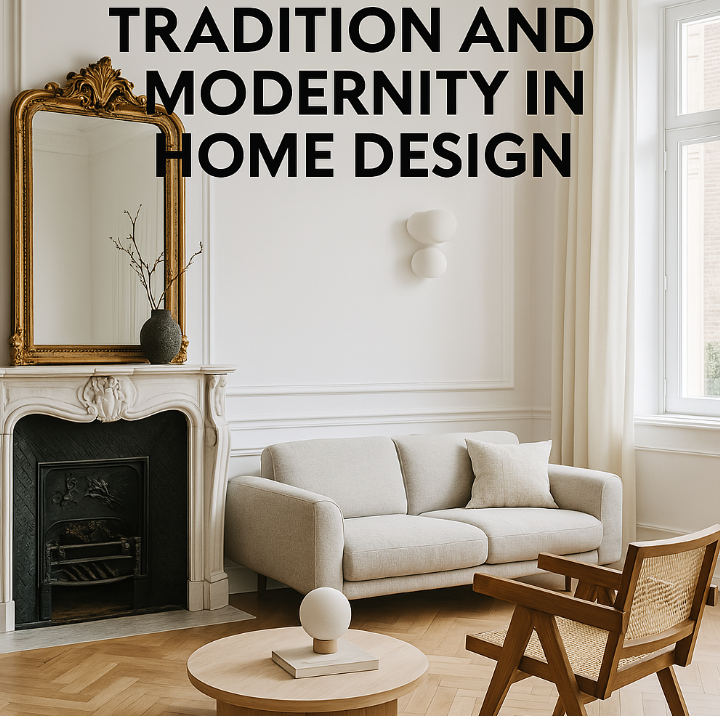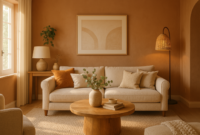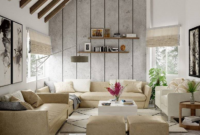Harmony of Tradition and Modernity in Home Design
In the ever-evolving landscape of home design, a captivating trend has emerged — the seamless blend of tradition and modernity. This harmonious integration not only speaks to a respect for cultural heritage and craftsmanship but also embraces the innovations and aesthetic clarity of contemporary living. The combination creates spaces that are at once grounded in history and tuned to the present — functional, beautiful, and deeply personal.
This article explores how designers, architects, and homeowners are achieving this delicate balance, the principles behind the fusion of old and new, and how you can incorporate these ideas into your own space.
A Conversation Between Past and Present
The essence of marrying traditional and modern design lies in creating a dialogue between the past and the present. It isn’t about compromise; rather, it’s about coexistence — allowing classical and contemporary elements to highlight each other’s strengths.
Traditional design evokes a sense of familiarity, warmth, and nostalgia. Rich wood tones, ornate moldings, and time-honored motifs serve as visual anchors. Modern design, on the other hand, favors clean lines, open spaces, minimal ornamentation, and a sense of lightness. When brought together thoughtfully, these styles don’t compete — they complement.
For instance, imagine a minimalist kitchen outfitted with sleek, white cabinetry and state-of-the-art appliances, enhanced by a reclaimed farmhouse table and vintage pendant lights. The result is a space that feels fresh but also tells a story.
Principles of Harmonious Integration
To achieve a successful fusion of tradition and modernity, several design principles come into play:
1. Balance and Contrast
Contrast is one of the most effective tools in this style. It brings dynamism and character to a space. Pairing a centuries-old Persian rug with a modernist glass coffee table creates visual tension that’s both compelling and balanced.
Use symmetry and asymmetry thoughtfully. Traditional architecture often leans toward symmetry, while modern interiors may play with asymmetry to create intrigue. In combination, these approaches can enrich a space rather than confuse it.
2. Continuity Through Color and Material
A consistent color palette helps unify disparate elements. Neutral tones — such as ivory, charcoal, taupe, or olive — often serve as a bridge between antique and modern furnishings.
Material continuity also plays a significant role. For example, a modern bathroom might feature a streamlined tub, but the use of marble, brass fixtures, or wainscoting hints at a more classical aesthetic, grounding the room in tradition.

3. Selective Curating
Achieving harmony often requires an editor’s eye. Not every piece from every era will work together. Instead, carefully select pieces that share common design threads — whether it’s a shared color, shape, or texture.
A modern room with a single antique armoire becomes a showcase of contrast, where the armoire is not out of place but elevated, and the surrounding modern elements are enriched by its presence.
Real-Life Applications and Examples
Let’s explore how this hybrid design philosophy manifests in different parts of the home:
Living Room: The Heart of Fusion
The living room is often where tradition and modernity most naturally meet. A modern sectional sofa in muted tones may sit beneath a traditional coffered ceiling. A sleek, low-profile media console might rest against a wall adorned with vintage artwork in gilded frames.
In one project, an architect maintained the original fireplace with intricate molding while redesigning the room around a minimalist Scandinavian aesthetic. The juxtaposition created a space that felt both rooted and refreshed.
Kitchen: Efficiency Meets Character
Kitchens, being functional spaces, often lean modern for the sake of efficiency. Yet, integrating rustic wooden beams, farmhouse sinks, or glass-front cabinetry reminiscent of early 20th-century kitchens adds warmth and soul.
Mixing materials — like brushed steel with walnut, or granite countertops with hand-painted ceramic tiles — further enriches the palette and adds layers of historical reference.
Bathroom: Sanctuary of Simplicity and Style
In bathrooms, modern design often brings clean, spa-like minimalism. Adding traditional touches — such as clawfoot tubs, classic hexagonal tiles, or vintage-inspired lighting — introduces timelessness.
A modern floating vanity beneath a large, ornately framed mirror bridges the gap between styles in a way that feels deliberate and serene.
Bedroom: Comfort Through Contrast
In bedrooms, tradition often emerges through texture — tufted headboards, embroidered linens, or antique bedside tables. Modernity shines in the form of built-in closets, sleek lighting, or unadorned window treatments that let light flood the space.
By layering both elements, the bedroom becomes a sanctuary that’s as restful as it is visually rich.
Cultural Reflections in Design
Across the globe, designers are blending the historical with the contemporary in culturally distinct ways. In Japan, the concept of wabi-sabi — an appreciation for imperfection and impermanence — is often expressed through simple, modern architecture that highlights aged wood, handmade pottery, or tatami mats.
In the Mediterranean, homes often showcase modern open-plan living within centuries-old stone walls, using local materials like terracotta and plaster in both traditional and contemporary formats.
Scandinavian countries champion minimalism, but their modern interiors often include heirloom furniture or folk-art inspired textiles that root the space in cultural heritage.
The key across cultures is authenticity. When tradition is honored sincerely and not simply as aesthetic decoration, it breathes meaning into a modern framework.
Sustainability and Storytelling
Another powerful benefit of combining old and new is sustainability. Reusing or repurposing vintage and antique furniture reduces waste and supports an eco-friendly design philosophy. Each piece carries a story, imbuing the home with a sense of continuity and depth.
Modern materials and technology can enhance comfort and efficiency, while traditional elements ground the home in a larger narrative — of family, region, or craft. This approach creates not just beautiful homes, but homes with identity and purpose.
Common Pitfalls and How to Avoid Them
Blending tradition and modernity is an art, and it’s easy to overdo or misalign elements. Here are some common missteps and ways to steer clear:
-
Over-cluttering: Avoid filling a space with too many contrasting items. A few statement pieces speak louder than a chaotic mix.
-
Mismatched proportions: Antique furniture was often designed for different room scales. Be mindful of how traditional pieces fit with modern layouts.
-
Ignoring context: A hyper-modern addition in a historic home can feel jarring without thoughtful transitions. Use materials or design elements that echo the home’s original features.
-
Inauthentic replicas: Opt for genuine vintage or antique pieces when possible. Replicas often lack the soul and craftsmanship of the originals.
Practical Tips to Start Your Own Blend
If you’re inspired to try this approach in your home, here are some starting points:
-
Begin with a base style: Choose whether your home will lean slightly more modern or traditional and layer the opposite style in smaller doses.
-
Incorporate one standout piece: A modern space can be instantly transformed by one grand traditional element — like a chandelier or a mahogany console.
-
Play with textiles: Introduce traditional patterns — like kilim, toile, or damask — through pillows, rugs, or curtains.
-
Modernize classic layouts: Use traditional room formats but update with modern color schemes or lighting.
-
Highlight craftsmanship: Let the details of older pieces — hand-carving, patina, or inlay — shine against clean, modern backdrops.
Looking Forward: The Future of Timeless Design
As trends continue to evolve, the desire for deeper meaning, sustainability, and connection to heritage remains strong. In many ways, blending traditional and modern design is more than a style — it’s a mindset. It’s about honoring what came before while embracing what lies ahead.
The most successful interiors today — whether in Parisian apartments, Brooklyn brownstones, or Balinese retreats — are those that tell stories. Stories of lineage, reinvention, and balance. Homes that speak in two voices, from two times, yet in perfect harmony.
Ultimately, harmony between tradition and modernity in home design isn’t about trendiness. It’s about creating environments that feel lived in, loved, and timeless.


